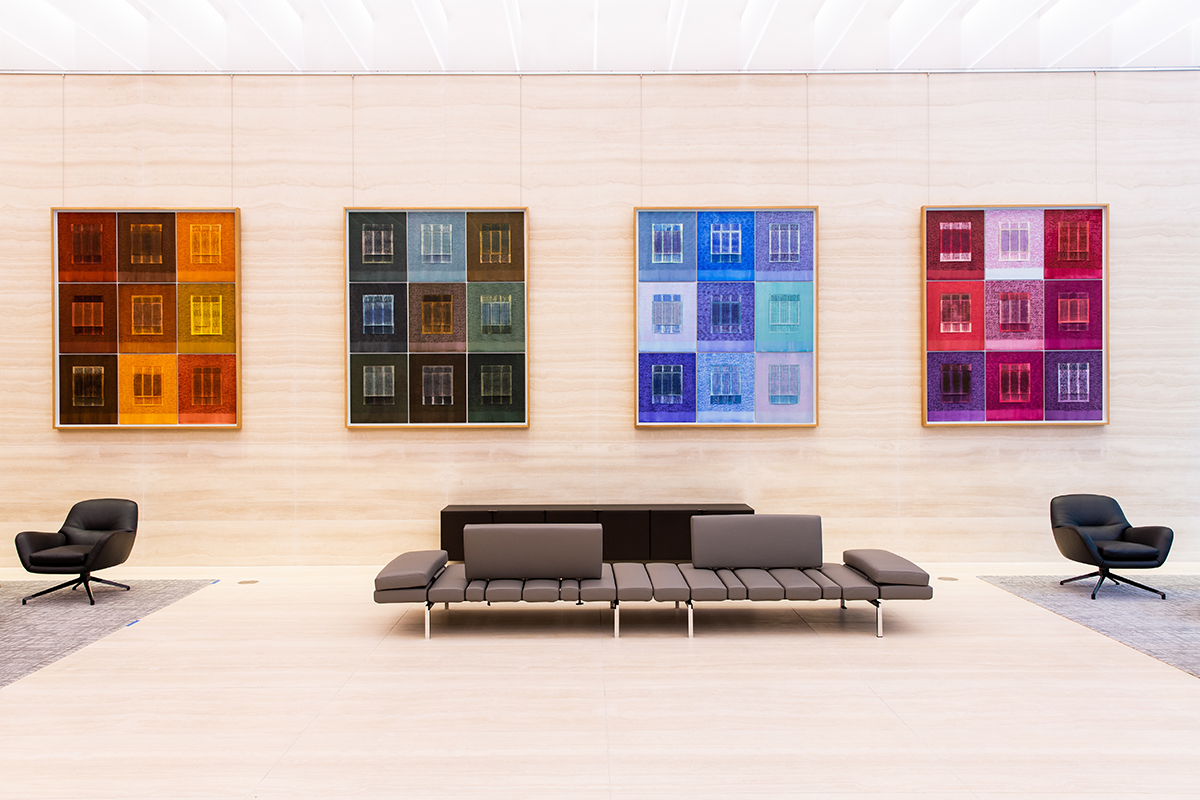
The Four Seasons, 2021, by Idris Khan, in the lobby of the Deutsche Bank Center, New York
With Preview Day of Frieze New York underway, Will Fenstermaker discovers a stunning and carefully curated selection of artworks, in a spectacular skyscraper in midtown Manhattan, courtesy of Deutsche Bank
On a warm Manhattan afternoon, the sun is shining in a way that it only shines in cities and canyons. For a moment, light reaches the lobby of the Deutsche Bank Center, two 55-storey skyscrapers occupying the entire west side of Columbus Circle in New York City. Inside, four coloured paintings seemed to come alive. They comprise a work called The Four Seasons by the London-based artist Idris Khan.
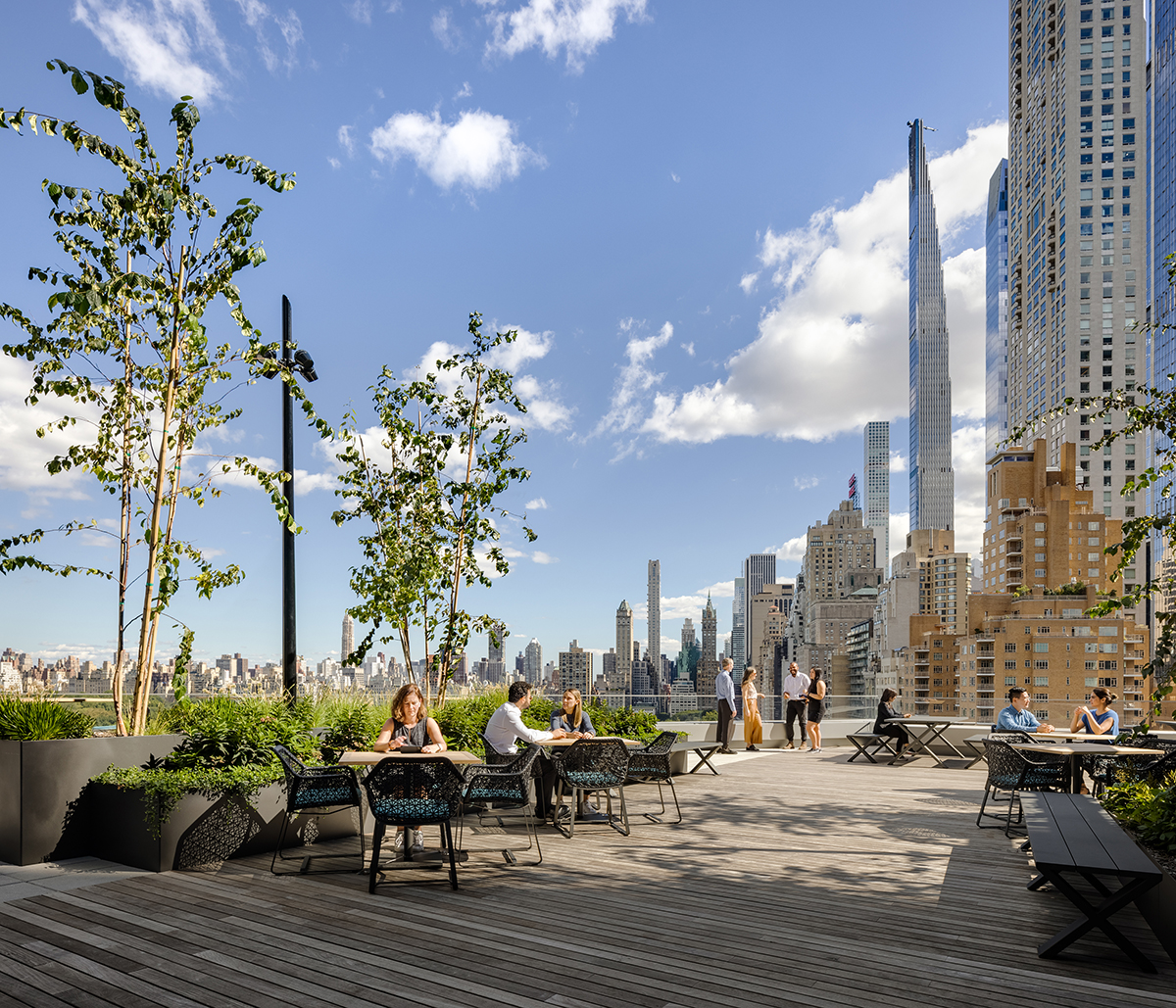
A landscaped terrace at the Deutsche Bank Center
Unbeknown to many, the Deutsche Bank Center is home to one of the world’s most substantial collections of contemporary photographs and works on paper. Deutsche Bank began collecting art in the late 1970s with a small idea, one that would prove radical in the context of corporate collections: works on paper could be made viewable to all, not siloed away in storage or senior executives’ offices. In 1978, the bank arranged its first display in its New York offices, and in 1986 it opened its new global headquarters in Frankfurt’s Twin Towers with each of the buildings’ 60 floors dedicated to a single artist.
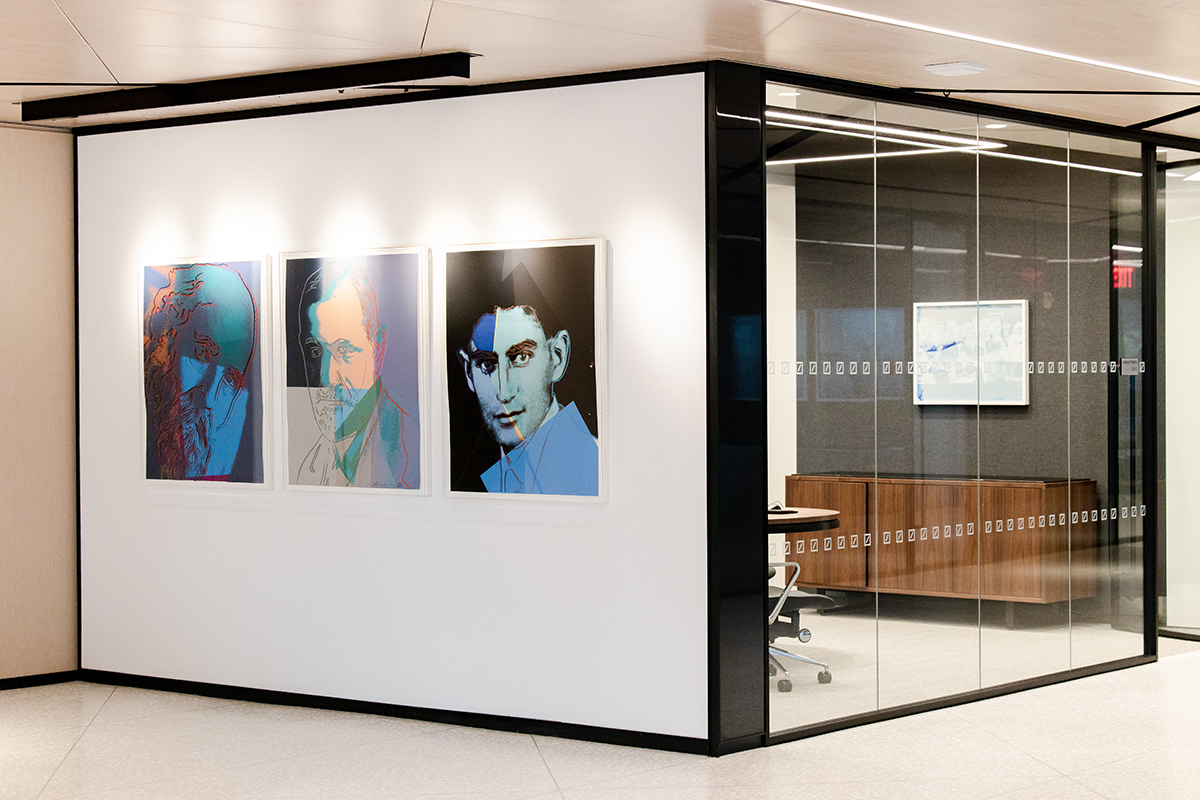
Ten Portraits of Jews of the Twentieth Century by Andy Warhol at the Deutsche Bank Centre in New York
At the time, the collection consisted mostly of work made by German artists (Deutsche Bank owns a particularly significant watercolour from Sigmar Polke’s early Capitalist Realism period, for example, and a vibrant pencil drawing made by AR Penck while the artist was living in the German Democratic Republic). Today, Deutsche Bank’s collection consists of tens of thousands of works of art, representing cultures from around the world, and displayed across 900 offices. “Portrait of a Collection”, in Deutsche Bank’s Columbus Circle building, charts the evolution and expansion of the New York collection. “Diversity is a truly important topic at Deutsche Bank,” says Britta Färber, Global Head of Art. Färber says works in the collection by Abstract Expressionist artists Eva Hesse, Lee Krasner and Joan Mitchell are “as groundbreaking as those of their male counterparts.” They underscore the impact of women artists on the movement.
Follow LUX on Instagram: luxthemagazine
While Deutsche Bank has no special remit to collect work by women artists, its attention to them over the decades is impressive. Wangechi Mutu, the subject of a recent retrospective at the New Museum and a 2019 façade commission at The Metropolitan Museum of Art, earned early support as a Deutsche Bank Artist of the Year in 2010. Alongside the major works by female Abstract Expressionists, the bank’s US collection contains major works by influential photographers such as Candida Höfer and Carrie Mae Weems, and contemporary artists such as Amy Sillman and Betty Woodman. In fact, Färber says that 80 per cent of recent acquisitions are works by women artists.
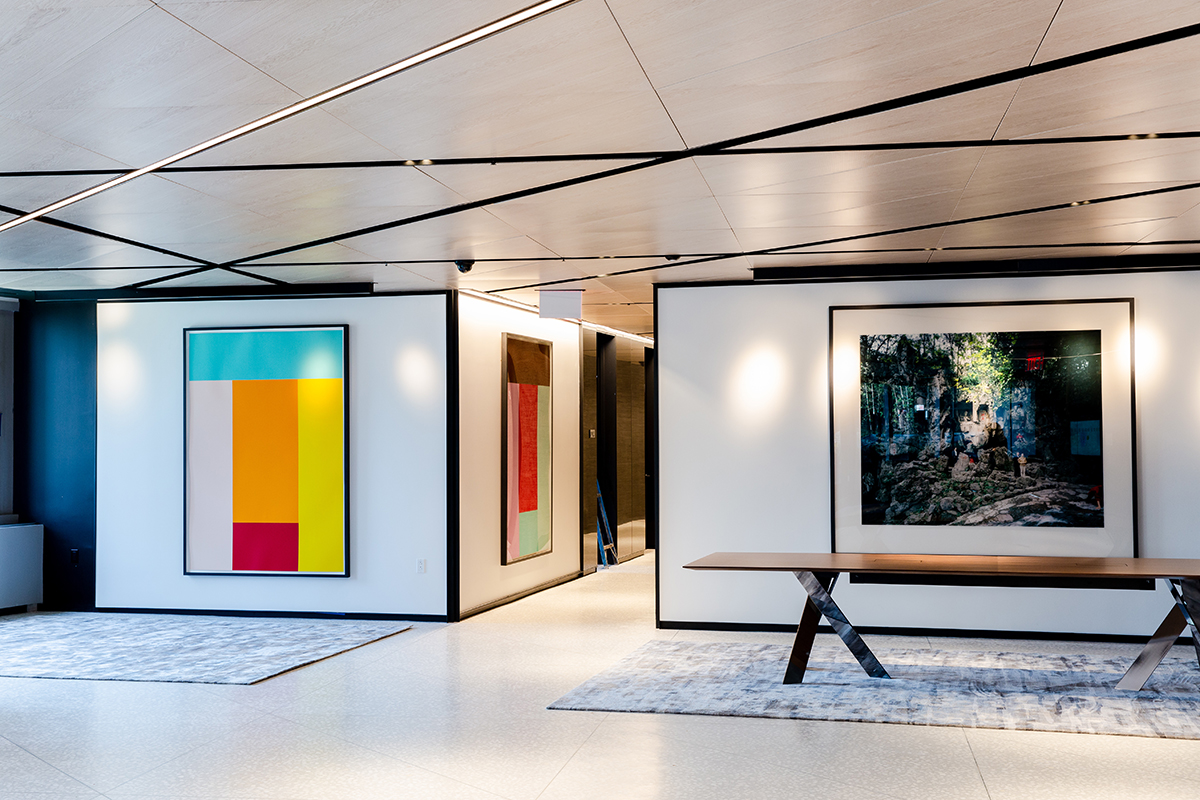
Works by Imi Knoebel (left) and Fei Lai Feng by Thomas Struth (right) in the collection at the Deutsche Bank Center, New York
For the prestigious Deutsche Bank Artists of the Year programme, a team of external art experts, including renowned curators Hou Hanru, Udo Kittelmann and Victoria Noorthoorn, propose key artists to a senior committee within the bank. It leads to an appreciation for art and community that is threaded throughout the organisation. More recent acquisitions include a triptych by John Akomfrah, a British artist of Ghanian descent and the son of anticolonial activists, and a group of works by Paris-based Canadian artist Kapwani Kiwanga, whose work explores the impact of colonialism on Canada’s First Nations. Both artists will represent their home countries at the 2024 Venice Biennale.
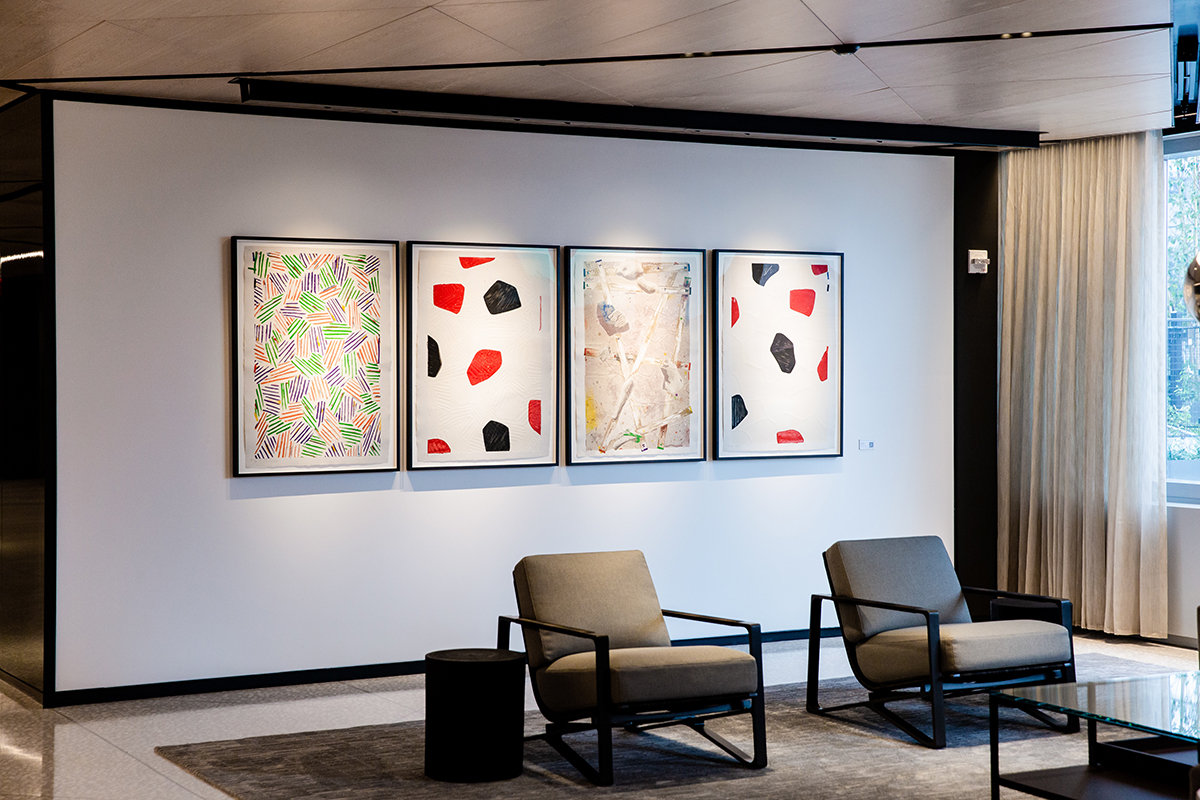
Four Panels from Untitled 1972, by Jasper Johns at the Deutsche Bank Centre in New York
“It is an honour to have work in a collection as expertly curated, well regarded and diligently cared for as the Deutsche Bank collection,” says artist Erin O’Keefe. In 2022, the bank commissioned O’Keefe as its Lounge Artist at Frieze New York – a fair it has supported international presence is a real benefit,” O’Keefe continues. “It allows the work to be introduced to audiences beyond the regional art worlds.” In New York, works by Kandis Williams, Haegue Yang, Moshekwa Langa, Jose Dávila and ruby onyinyechi amanze provide a refreshingly global outlook on contemporary artistic production. “Because I developed a personal relationship with many of Deutsche Bank’s representatives, it didn’t feel like I was joining a significant corporate collection,” says amanze, who is happy to see her work contextualised in the company of such significant works on paper.
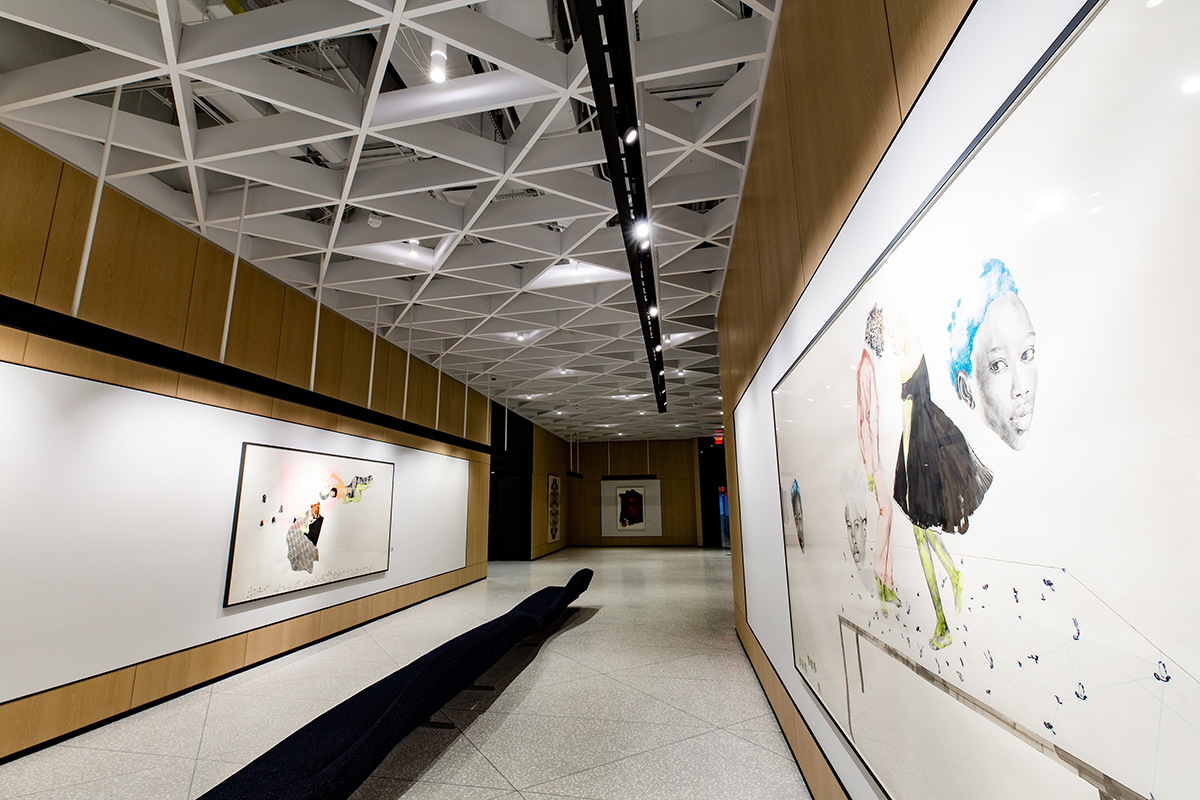
Works including ruby onyinyechi amanze’s Without a care in the galaxy, we danced on galaxies (or red sand with that different kind of sky) with ghosts of your fatherland keeping watch (left)
An immense composite photograph of the Shilin Night Market in Taiwan by photographer Jeff Chien-Hsing Liao belongs to a series “exploring the complex cultural conditions of countries that are heavily influenced by modern colonisation and the ongoing impact of globalised immigrant labour,” says the artist. Some might find it surprising that work so critical of capital is in the collection of a global corporation, but Deutsche Bank believes that its collection strengthens the firm’s commitment to funding positive impact.
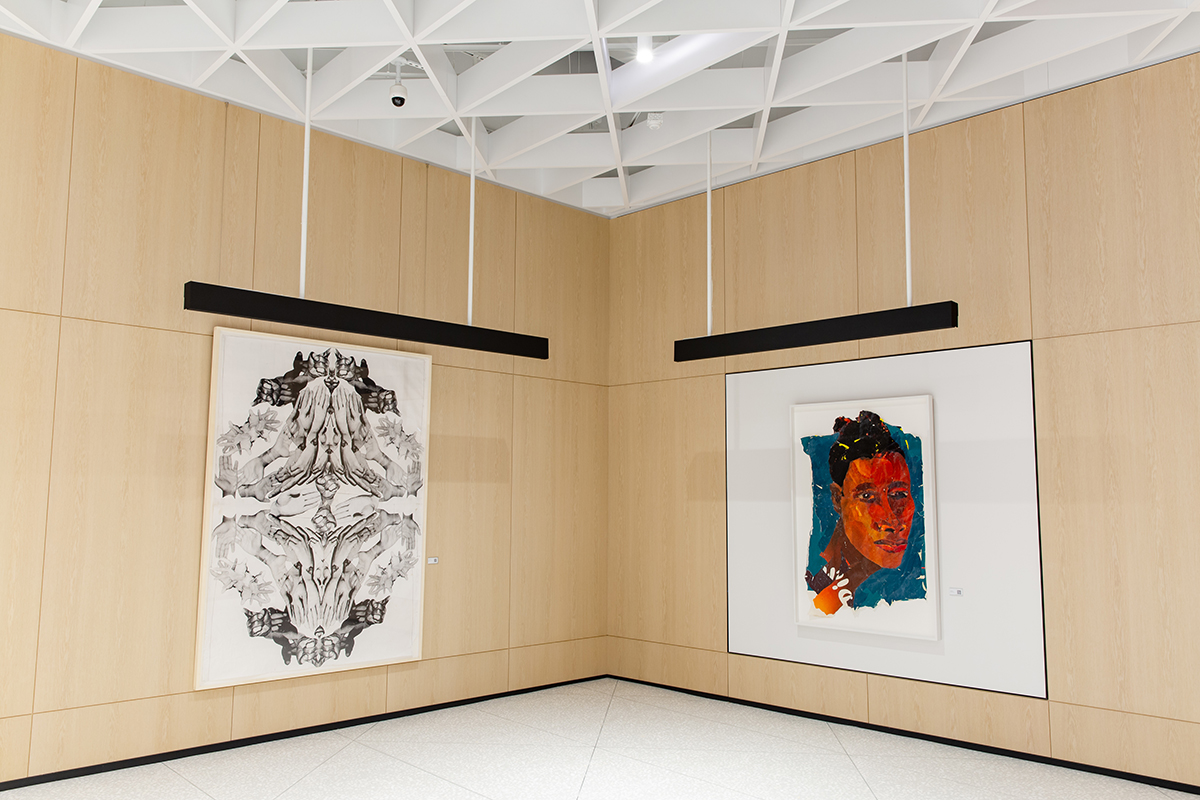
The Oratory Command: X Carmichael King Hampton by Kandis Williams (left) and Untitled 2015 by Kay Hassan (right) at the Deutsche Bank Centre, New York
Read more: Sophie Neuendorf’s Guide to Starting an Art Collection
Back downstairs, art including The Four Seasons is an expression of Deutsche Bank’s broader ambition to support sustainable initiatives. “The art in the lobby ties the since it was founded in London 20 years ago, including through its annual Los Angeles Film Award and Emerging Curators Fellowship. “The fact that the collection has an Deutsche Bank Center to the original design approach for our space,” says James Dyson, Director of Global Real Estate for the Americas.
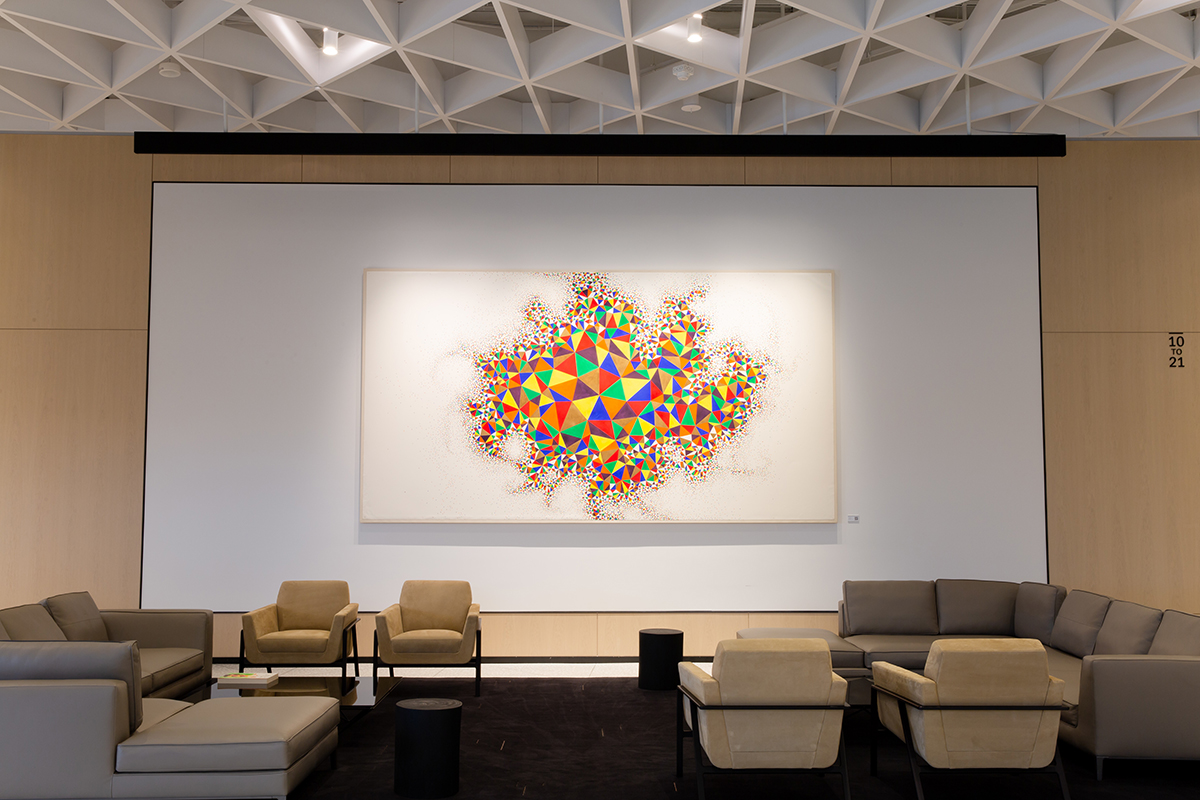
Faces of Infinity (Unfinished) by Charles Avery in the collection at the Deutsche Bank Centre, New York
When Deutsche Bank began planning the project, it hired Gensler to design the workspace. In June 2022, the project achieved LEED Gold certification, marking a significant advancement in Deutsche Bank’s goal of reaching net zero by 2050.
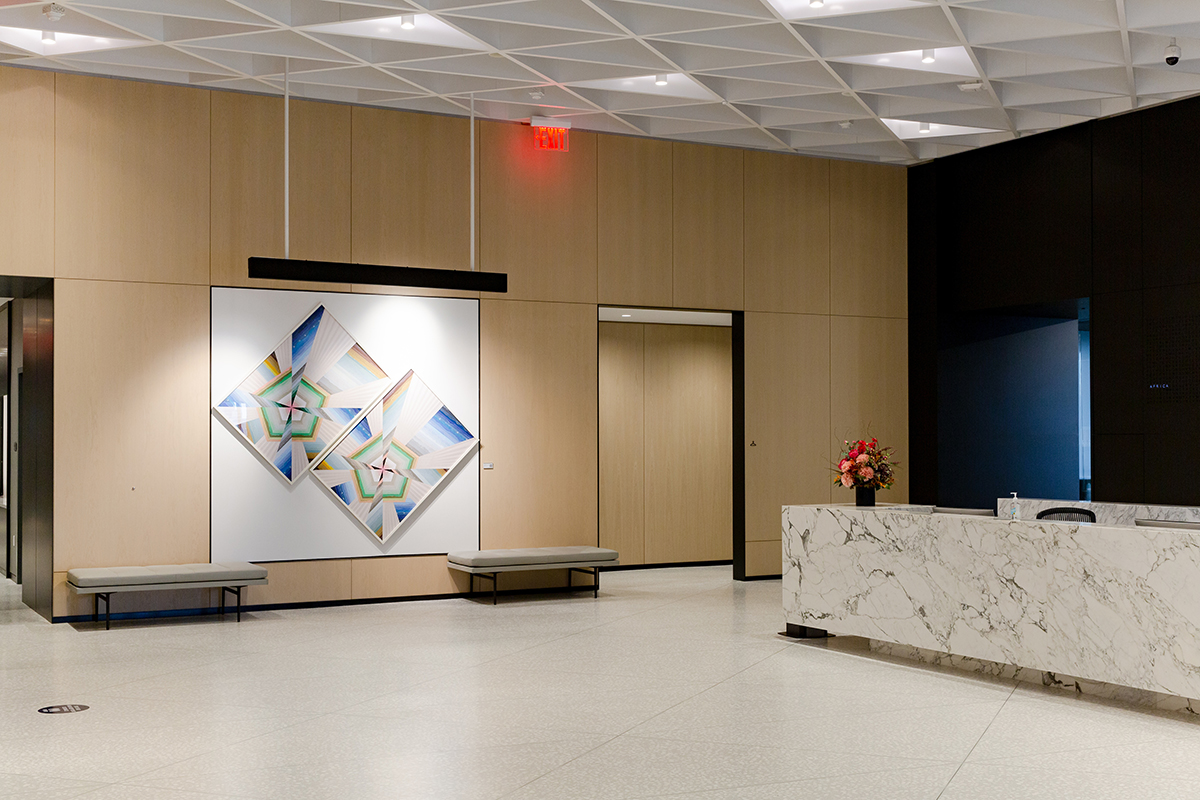
Jewel Glow – Trustworthy #248 by Haegue Yang in the collection at the Deutsche Bank Center, New York
Deutsche Bank’s space consumes half the energy of its previous headquarters and 100% of its CO2 emissions are compensated via renewable sources. That sits well alongside the energy of its art.
Find out more: art.db.com
This article was first published in the Spring/Summer 2023 issue of LUX



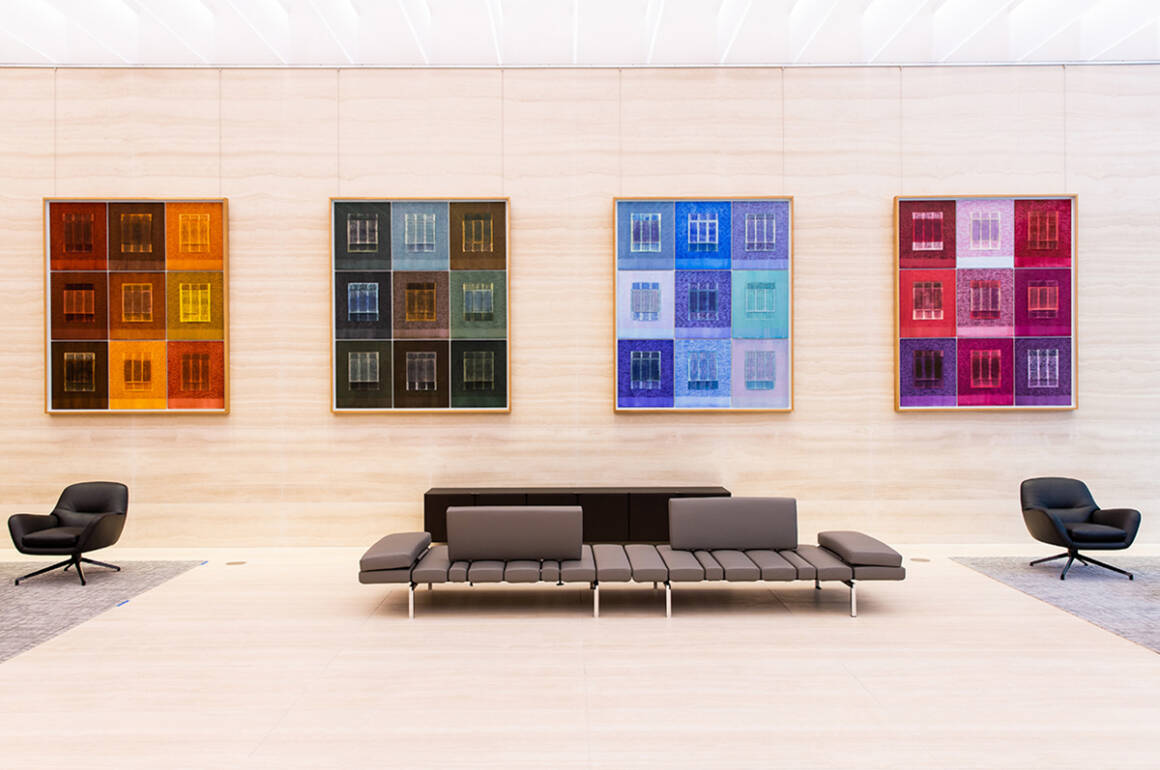

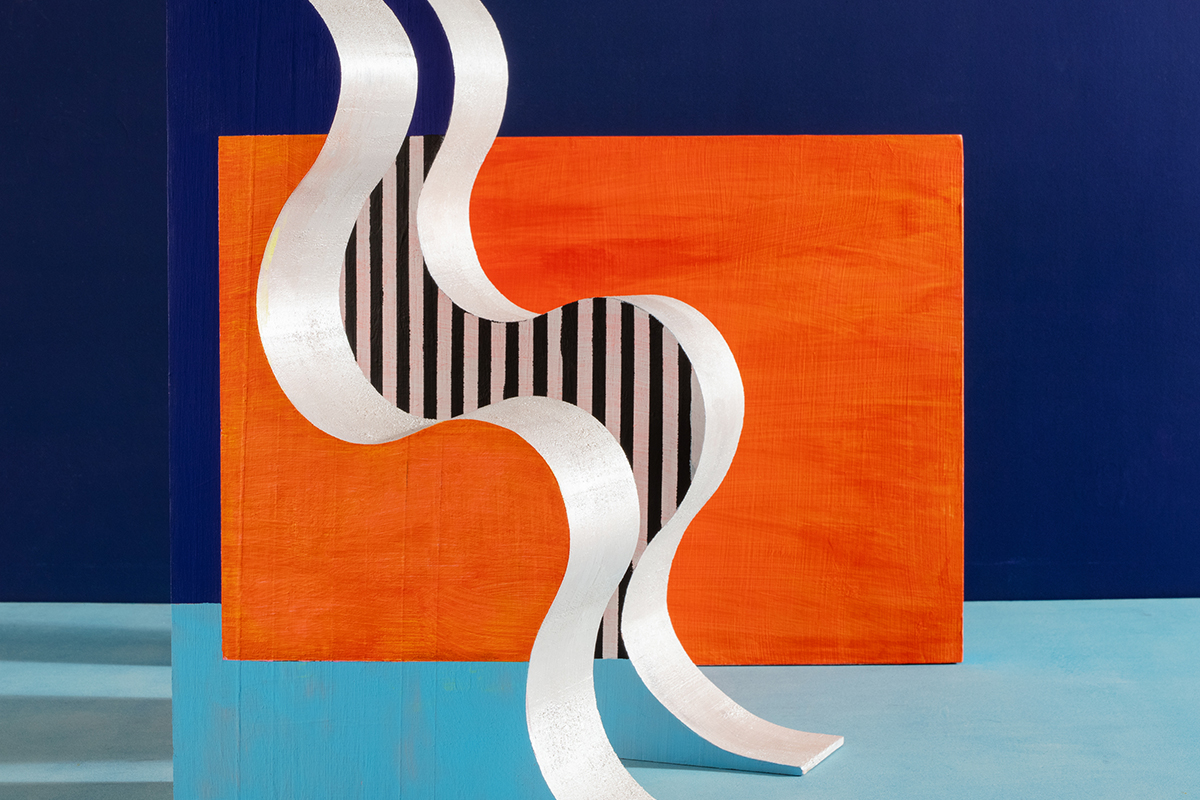
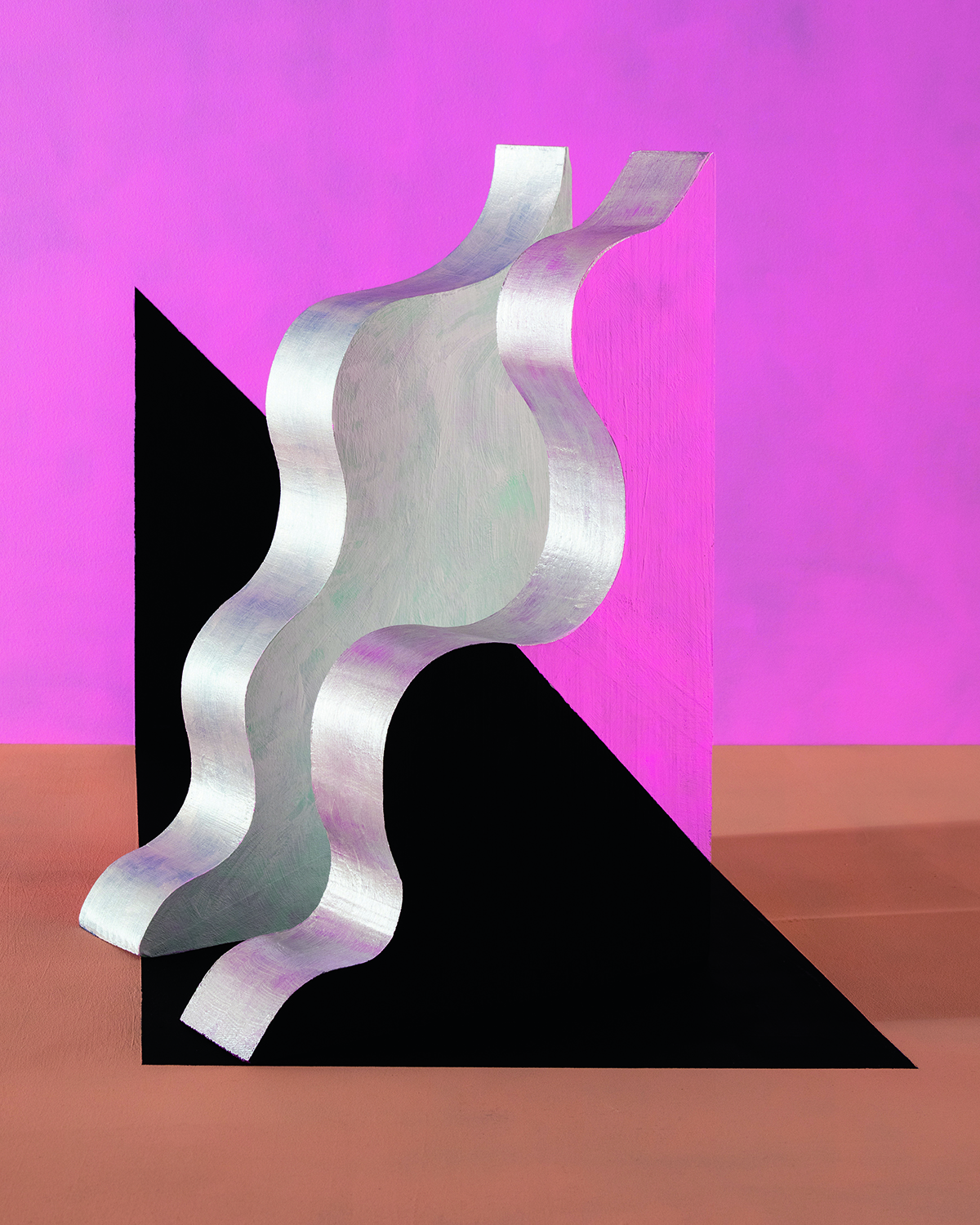
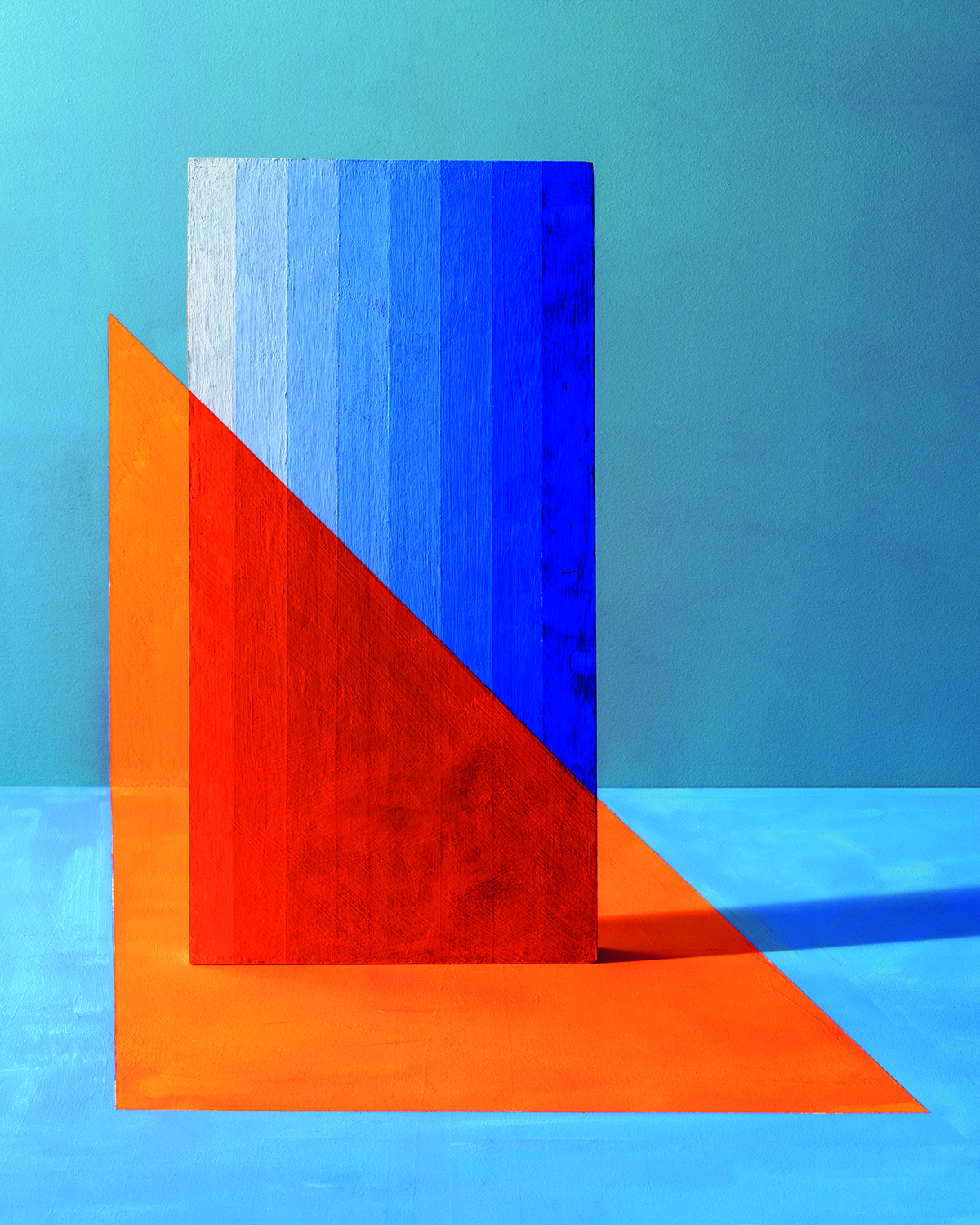





Recent Comments